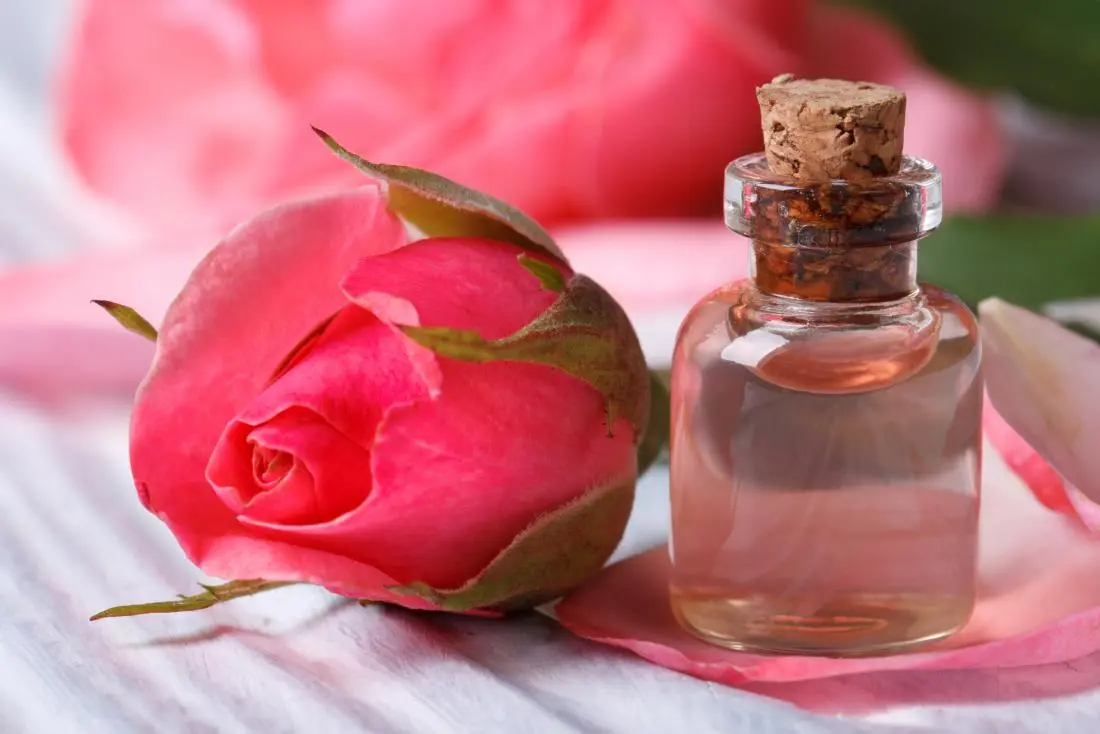Roses have captivated people for centuries with their beauty, fragrance and versatility. Understanding why they are so prized can help you better appreciate the queen of flowers.
Why Roses are Special
Roses have been admired throughout history, with fossil evidence showing they existed 35-40 million years ago. Many varieties possess a beautiful, sweet scent that perfume and aromatherapy industries covet. Their striking blooms are available in a rainbow of colors ranging from darkest red and purple to verdant green and sunny yellow.
Beyond aesthetics, róża also convey deep symbolic meaning. They often represent love, beauty, politics and war across different cultures. Today, the rose remains one of the most beloved and universally recognized flowers.
Interesting Facts about Roses
- Roses are part of the large plant family Rosaceae that also includes fruits like apples and cherries
- The name “rose” has origins in Greek, Roman and North Germanic languages
- Roses are woody perennials, meaning the mature plants have firm stem structures
- Botanists estimate there are over 300 species and tens of thousands of cultivars
- Roses thrive around the world in hardiness zones 2-11
Hybrid Tea Roses
Hybrid teas resulted from crossbreeding two types roses in the late 1800s into one with desirable qualities from both. They grow long, upright stems topped by a single bloom. The large flower size and long vase life made hybrid teas hugely popular in floral arrangements and breeding programs.
Floribunda Roses
Floribunda roses produce abundant clusters of medium-sized flowers on short compact bushes. They originated as crosses between hybrid teas and polyantha roses to yield pretty blooms on easy to care for plants. The profuse blossoming makes them nice landscape shrubs.
Grandiflora Roses
As a class of roses, grandifloras came about more recently in the 20th century. They were bred to combine the recurved form of hybrid teas with the clustered blooming habits of floribundas. The result is multiple large, hybrid tea-shaped flowers per stem.
Climbing Roses
Climbing roses have long, flexible canes well-suited to training up supports. They fall under several classes including Ramblers, Climbing Hybrid Teas, Climbing Floribundas, Climbing Grandifloras and Climbing Miniatures. Grow them on trellises, pergolas, fences and arbors to enjoy a stunning vertical display.
Shrub and Landscape Roses
Landscape and shrub roses bring reliable easy care and appeal. They readily fill spaces with clusters of charming blossoms and attractive bushy forms. Popular types used in gardens include Knock Out®, Drift® and Flower Carpet® roses due to their disease resistance and reblooming nature.
Bringing Rose into Your Home Decor
The graceful beauty of roses presents many possibilities for home decor. A few stems can impart color and vitality while more elaborate additions like rose-patterned wallpaper or area rugs incorporate its motifs.
Adding Fresh Rose Arrangements
Nothing conveys the ambience of roses better than the real thing. Display fresh cut stems in vases and containers around your home. Freshen the water every few days. Mix colors and cultivars for more interest. Roses also make fragrant ephemeral arrangements floating in bowls.
Using Rose Motifs and Fabrics
Rose motifs grace many fabrics and wallpapers. Accent your rooms with rose-strewn pillows, curtains or area rugs. Lean into classic or modern looks with stripes, ovals and organic prints. Play up the lush blossoms with adjacent ornamentation evoking abundance like wreaths and garlands.
Planting Rose Bushes in Your Garden
Bushes in home landscaping provide convenient flower cutting. Guide climbing plants onto backyard structures for vertical summer blooms. Research types suitable for your climate that resist disease. Hydrangeas, lavender, bee balm and salvia complement planted roses.
Wearing Rose Fragrances and Jewelry
The elegant ambience of roses translates beautifully into perfumes and jewelry for everyday wear. Their sweet perfumes uplift moods while the gemstone and metal interpretations feel precious.
Popular Rose Perfumes
Rose scents feature heavily across perfume families. Iconic rose fragrances include Chloé Rose, Gucci Bloom, Valentino Voce Viva, Lancome La Vie est Belle and Jo Malone Red Roses Cologne. Spray on pulse points like wrists, neck and décolletage for lasting diffusion. Reapply for a floral pick-me-up any time of day.
Rose Gold Jewelry Pieces
From modern to traditional, rose gold flatters nearly all skin tones with its warm, welcoming shine. Blush gold metals infuse a refined yet playful energy into designs. Stack rose bands and charms along with earrings, necklaces and cuffs for an eye-catching collection. Accent diamonds and colored gemstones nicely with the rosy metal hue.
Rose Quartz Crystal Jewelry
Rose quartz embodies unconditional love and healing vibrations in crystal healing traditions. Faceted beads, tumbled chips, geodes and pendants harness these gentle potencies. Rose quartz makes meaningful, protective accessories to wear daily or for meaningful rituals. Combine with silver or yellow gold settings.
Cooking and Baking with Roses
Beyond visual and fragrance enjoyment, roses also lend their friendly flavors to food and drink recipes. Experiment with a little or a lot for dramatic dessert garnishes all the way to intriguing entrees.
Rose Tea and Cocktails
Fragrant dried rose buds and petals brew into floral infusions like rosebud tea. Add to black or green teas too. Float petals in lemonades and cocktails like rose sangria. They bring aesthetic beauty as edible garnishes. Use mild petals from pesticide-free plants.
Rose Essences and Flavors
From Persian cuisine to avant-garde molecular gastronomy, rosewater provides singular flavoring. Stir sparingly into drinks, chocolates and fruit desserts for perfumed essence without overpowering. Blend into smoothies too. Rose syrups lend sweetness along with the distinctive taste.
Decorating with Rose Petals
Embellish all kinds of dishes with fresh or crystallized rose petals. Toss them into salads and as cake, panna cotta or pavlova toppings. Arrange crepe stacks or fruit plates with them too. Save petals from organically grown roses to minimize pesticide residues.
Fun Ways to Enjoy Roses
Roses present nearly endless inspiration for activities and gifts celebrating beauty and affection. Surprise loved ones or spend time appreciating them yourself with these ideas.
Sending Roses to Loved Ones
Surprise them for their birthday, anniversary, graduation or achievement. For best availability and cost savings, order roses during less popular seasons like summer rather than on Valentine’s Day or Mother’s Day. Include their favorite colors and a sweet note. Time delivery to occasions or whenever sentiment strikes.
Photography using Roses
Capture fantastical images using macro lenses that showcase intricate petals, light-filled buds and lively shadows. Shoot portraits in gardens using roses as Tuscan accents. Preserve memories of someone holding a single long-stemmed bloom. Print and frame special images.
Rose Themed Parties
Host a rose party with feminine cocktails like rose lemonade spritzers garnished with cucumber-rose ice cubes. Decorate with lace overlays, crystal vases holding rose centerpieces and petals in shallow glass bowls. Serve bakery cake pops dipped in pink chocolate. Send guests home with rose soap favors.
Roses for Health and Wellness
With their bounty of phytonutrients and soothing properties, roses benefit natural health too. Incorporate them into your self-care rituals and skin care regime.
Rose Hip Benefits
The tart, ruby-red fruits following bloom contain exceptional vitamin C levels that support immunity and heart health. They also have antioxidants, anti-inflammatory and antimicrobial properties. Use dried whole fruits for tea. Extracts add to serums and supplements.
Rose Essential Oils
Standard essential oils like rose otto and rose absolute have extensive aromatherapeutic applications. Diffusing the floral, sweetly woody fragrances promotes relaxation, skin regeneration and mood enhancement. Add calming droplets to skin salves, perfumes, room mists and candle blends too.
Rose Petal Skin Remedies
Apothecary healers reach for roses to combat inflammation, hydrate and restore skin’s radiance. Infuse the petals into nourishing oils for ultra-moisturizing lotions and creams. Steep some flower petals for a gentle, fragrant toner too. The adornments also work crushed gently into warming facial masks.
Designing an Eye-Catching Rose Garden
Roses reign as the quintessential garden flower for their beauty, fragrance and variety. When incorporated thoughtfully into landscape design, they instantly elevate spaces with their graceful charm. From formal rose gardens to relaxed cottage plantings, many creative possibilities exist to showcase the queen of flowers. Match different rose types to your site’s sun exposure, available room and style preference for success.
Selecting the Best Roses for Landscaping
With over 300 species and tens of thousands of hybrid cultivars, roses offer incredible choice and diversity. Before purchase and planting, reflect on your landscape vision and growing conditions to pick winners tailored for the space.
Considering Bloom Time, Size, and Growth Habits
Research flowering seasons, mature sizes and bush shapes expected for a rose type under consideration. This determines suitable placement in beds and proper support structures if needed. Focus on reblooming varieties to extend color. Choose climbing roses, shrub/landscape roses or hybrid teas based on the display effect desired.
Choosing Disease Resistant Varieties
Look for landscape rose introductions marketed specifically for trouble-free performance such as Knock Out, Drift, Oso Easy and Flower Carpet. Bread for toughness, their foliage stays attractive with less spraying needed to counter diseases. This allows more time enjoying flowers versus treating issues.
Planning Color and Height Variations
Vary hues and plant heights to create appealing layered texture. Try pairing gaps of airy, tall white climbers against low drifts of reddish purple rugosa shrub roses for contrast. Blend several shades of pinks for soft cohesion. Outline beds with crisp whites like ‘Pope John Paul II’ bushes.
Caring for Roses Outdoors
Happy, healthy plants start with selecting disease-resistant roses suited for local climate. Provide prime growing conditions through proper planting, watering, fertilizing and pruning. Take time with preparation and maintenance for rose gardening success.
Proper Planting and Soil Preparation
Dig wide planting holes and amend soil with compost or aged manure to enrich nutrition. Set rose bushes at the same level they grew in the pot. Top-dress with mulch to conserve moisture and suppress weeds. Allow good airflow and light penetration with proper spacing between plants.
Watering and Fertilizing Practices
Establish deep roots with less frequent but thorough watering. Apply organics like fish emulsion or rose fertilizer according to label rates as plants leaf out in spring and again halfway through summer. Avoid excess nitrogen which promotes foliage over flowers.
Pruning and Deadheading Tips
Remove spent blooms frequently by pinching or cutting back stems to a leaf node. This tidy practice redirects energy into forming more flower buds. Prune lightly during dormancy to remove dead wood and shape plants. Limit spring pruning to opening up center areas with air circulation in mind.
Protecting Roses in Winter
In cold climates, shield prized roses from dieback or total loss over winter. Mound soil, compost or mulch around the base to insulate roots. Bend canes down and secure under layered organic material. Alternatively, construct Styrofoam rose cones over bushes or wrap plants with breathable fabric once fully dormant. Apply winter protection just before first hard frost. Remove coverings in early spring as weather warms.
Enhancing with Companion Plants
Build upon rose garden elegance by interplanting complementary flowers, foliage and small ornamental trees. This creates multi-season intrigue through varied textures, scents and colors.
Pairing Roses with Flowers
Classic cottage style combinations include clustering roses with carnations, foxgloves, delphinium, cornflowers, poppies, sage and sweet alyssum. Weave roses through borders of geraniums, lavender, bee balm, yarrow and coreopsis for pollinator appeal. Underplant climbers like ‘Don Juan’ with blue salvia, catmint and variegated iris.
Combining with Foliage Plants
The lush green backdrops of ferns, hostas, brunnera, Japanese maples and ornamental grasses make roses really stand out. Intersperse these foliage accents through rose focal points. Shall low ground cover plants like creeping jenny, sweet woodruff or lady’s mantle flow around rose bushes and other companions.
Using Roses on Arbors, Fences and Structures
Train flexible climbing roses over backyard arches, obelisks, bridges, pergolas and living walls. Showy, recurrent blooms cover vertical spaces to add height andPulling interest to a scene. Try vigorous roses like ‘Cecile Brunner’, ‘New Dawn’, ‘Zephirine Drouhin’, ‘William Baffin’ or ‘John Cabot’. For arbors, also incorporate non-vining roses like The Fairy’ intermixed with clematis vines.
Creative Landscape Designs
Make roses star attractions through smart placements suited to different garden themes. Follow basic design principles like ensuring good flow and inclusion of hardscaping.
Formal Rose Garden Plans
Channel old world refinement with symmetrical beds, straight lines and defined edges in formal rose garden style. Boxwood hedging and luxe materials like stone, wrought iron and tile raise formality. Include iconic varieties with impeccable form such as hybrid teas and floribundas in this structured context. Train climbers on obelisks dotted rhythmically across the backdrop.
Modern and Cottage Garden Styles
Impart whimsy and free flowing movement favored in cottage gardens. Scatter rugosa, antique and David Austin shrub roses through billowy flower beds edged randomly with stone or bricks. Underplant with thyme and creeping herbs. For contemporary flair, display different flower forms and foliage colors in a relaxing zen garden marked by boulders, raked gravel and restful water features.
Theme Gardens Focused on Roses
Build whole landscape schemes around rose varieties for tremendous visual impact. Concentrate on a single dazzling color like red or yellow. Collect diverse flower forms but within a narrow tonal range like pastel pinks and creams. Highlight fragrances by blending hybrid teas and floribundas known for exceptional aroma. Dedicate other beds to the history of roses with groupings of old garden inaugural specimens alongside newest introductions.
Conclusion
Through their elegance, symbolic meanings and versatility, roses abundantly enhance life’s everyday pleasures while reminding us of love and hope flourishing in the world. Their delicate appearance belies hardy adaptability in gardens across diverse climates. Roses have earned their reigning status again and again. Whether raising moods with sweet scents or lifting nutrition with their fruits, roses surround us with beauty and soul food when we invite them into our homes and lifestyles.
FAQs
What different types of roses are there?
There are over 300 species of roses and tens of thousands of cultivated varieties. Major types include hybrid teas, floribundas, grandifloras, climbing roses, shrub/landscape roses and old garden roses. Each class has different attributes regarding size, flower shape, bloom frequency, growth habits and fragrance intensity.
How can you use roses for skin care?
Rose extracts, oils and water provide antioxidants, vitamins and other rejuvenating skin-boosting ingredients. Petals add gentle exfoliation. Add rose hydrosol, oils or micellar water to cleanse skin. Use rose masks, scrubs, mists and creams to hydrate, nourish and restore glow.
What are some fun crafts using roses?
Roses inspire all kinds of DIY crafts and decorations. Dry petals and buds for potpourri. Preserve arrangements in resin or glass artwork. Press them into stationery and candle holders. Infuse vinegars, sugars and honeys with their essence. Create rose gemstone essence and crystal grids that promote self-love, friendship and relationships.
What varieties of roses grow as compact landscape shrubs?
Landscape roses bred to thrive with minimal care in garden settings include Knock Out, Drift, Flower Carpet, Oso Easy and Easy Elegance. Plant them singly or in mixed borders and beds paired with lavender, bee balm, coral bells, grasses and small trees like Japanese maples.
How do you use rose petals in cooking?
Use mild, pesticide-free petals to tint and flavor desserts like cakes, ice creams and sauces with subtle floral sweetness and bright magenta-pink. Crystallize flowers for elegant cake decorating. Float petals in refreshing drinks from lemonade to cocktails. Scatter them over fruit salads or embed inside clear gelatin desserts like panna cotta.





























